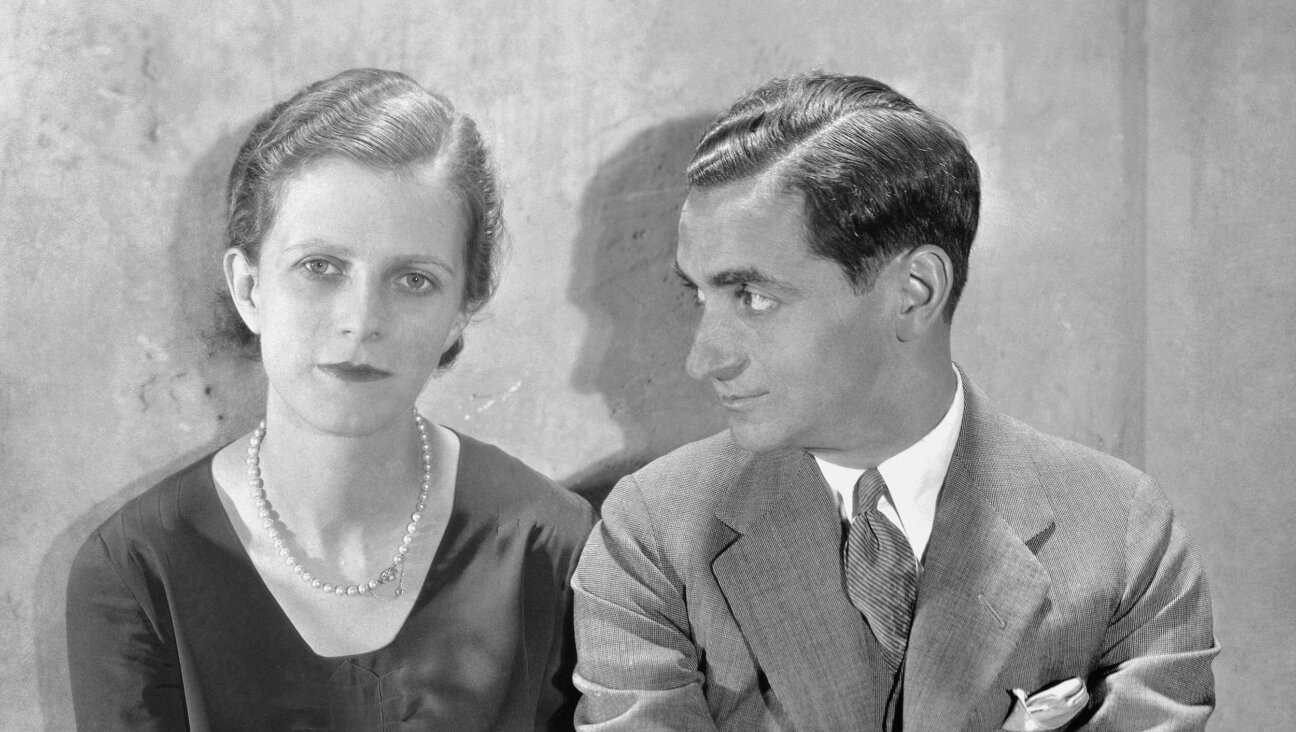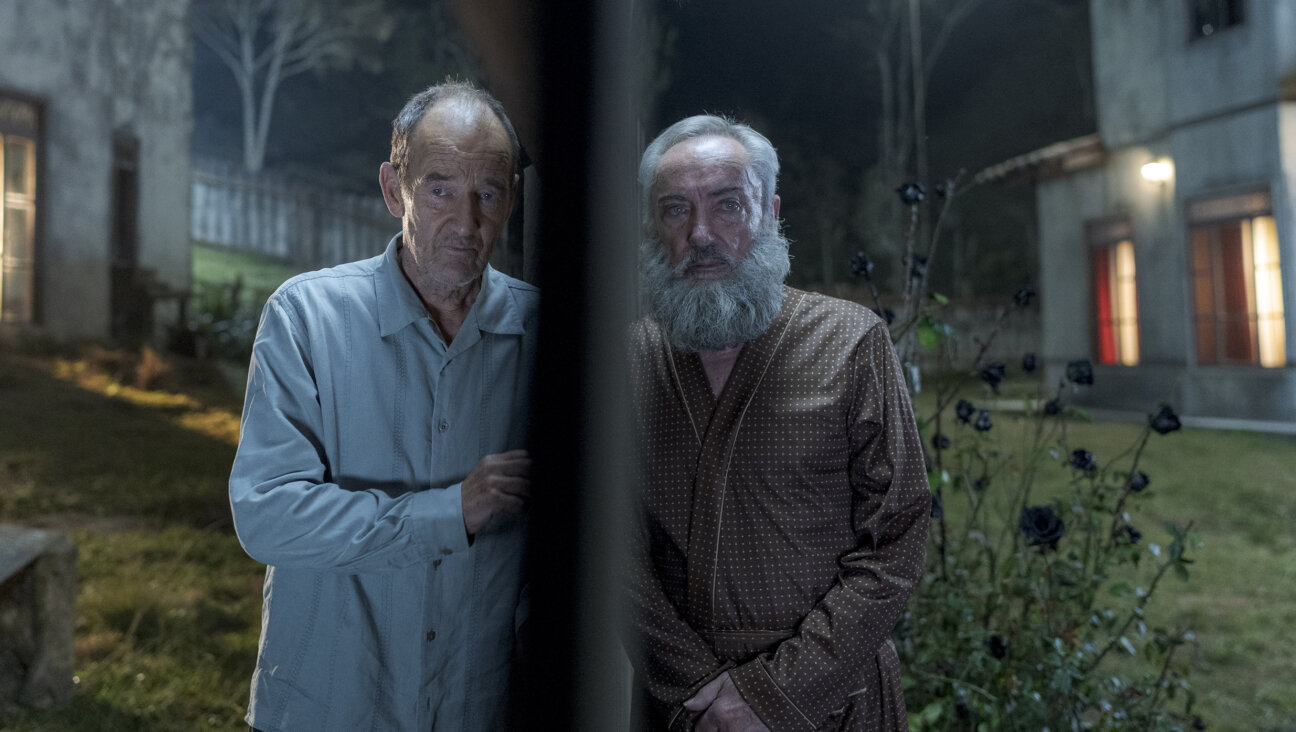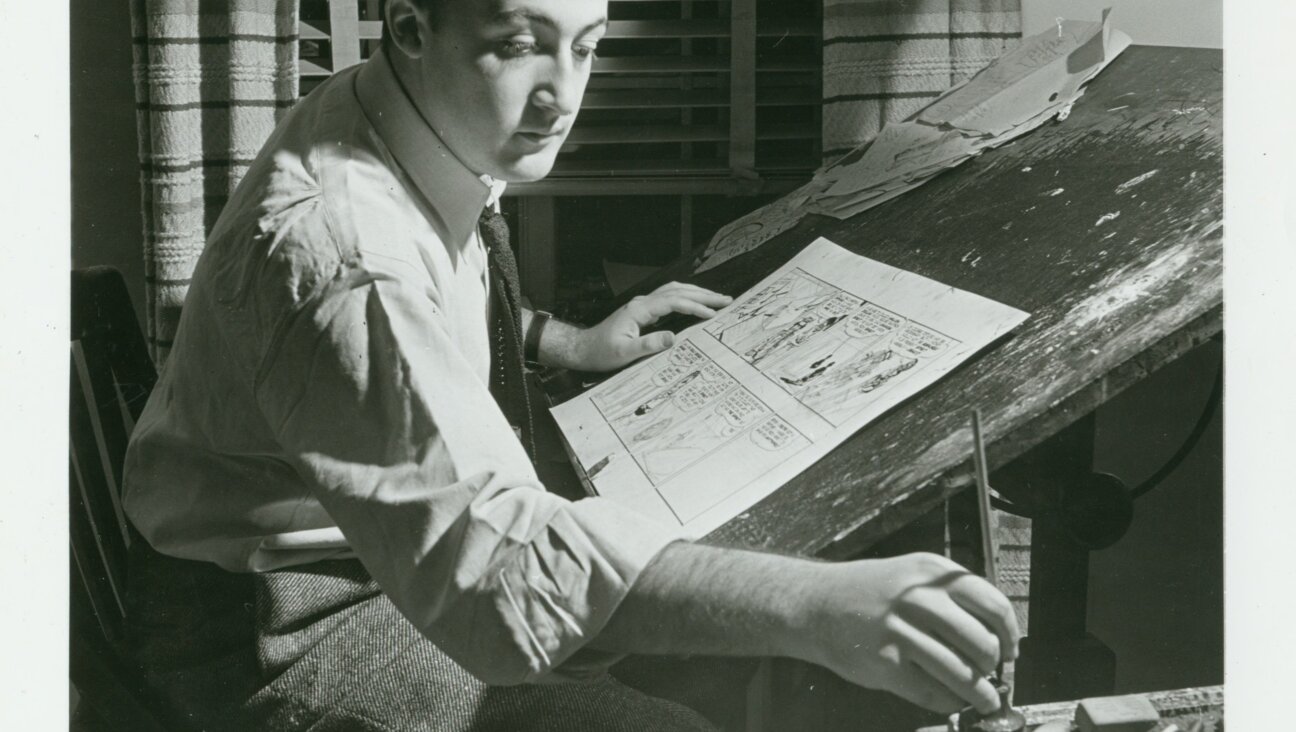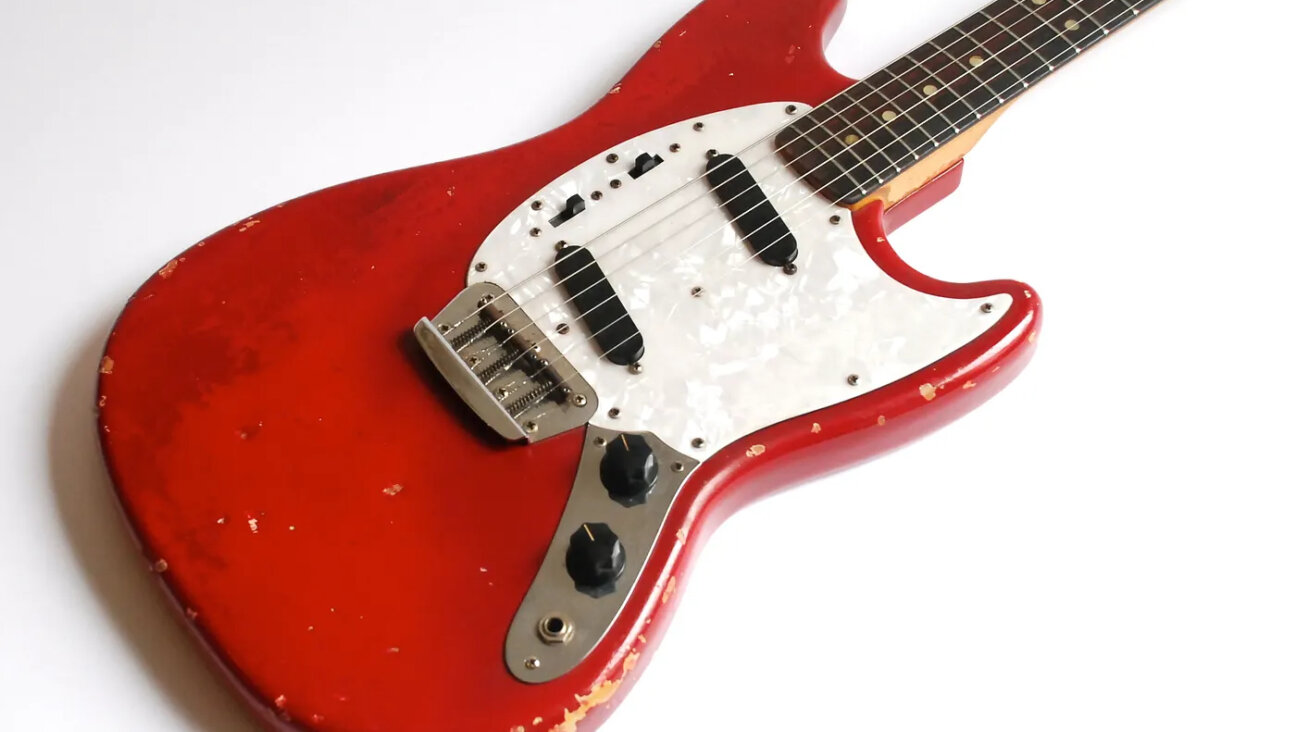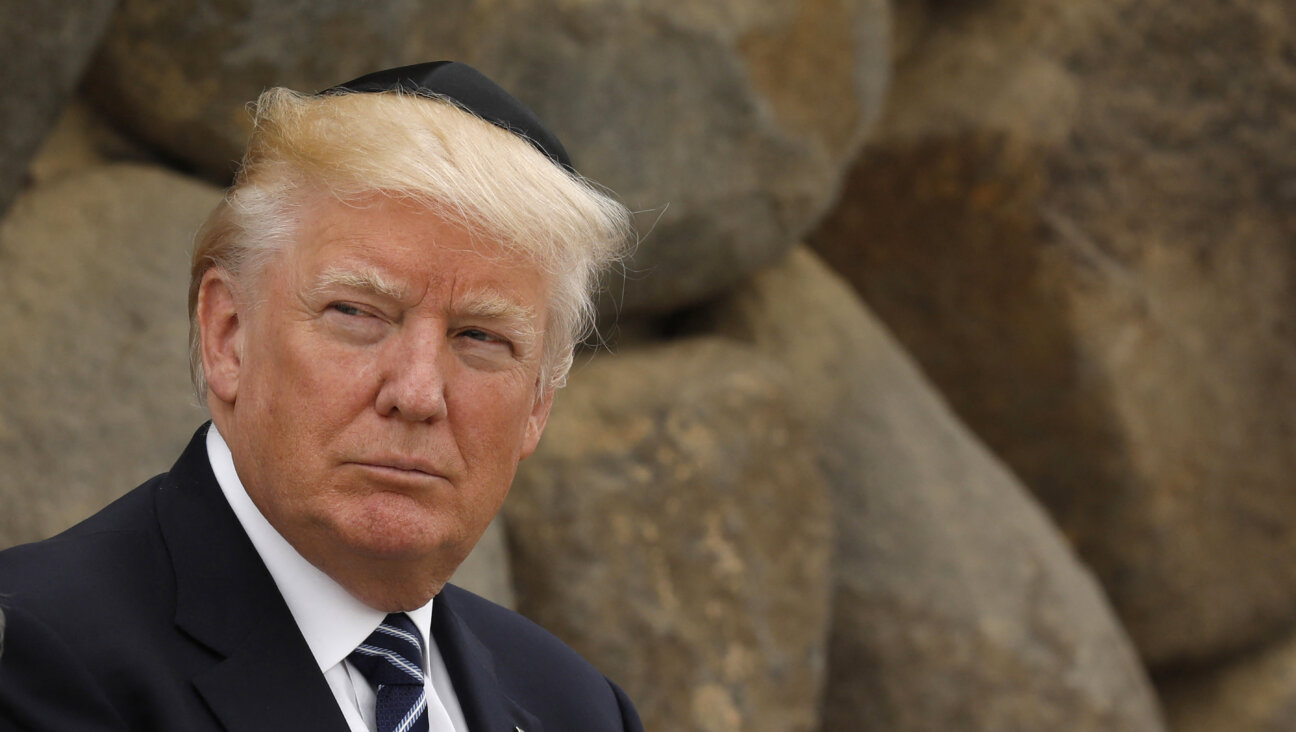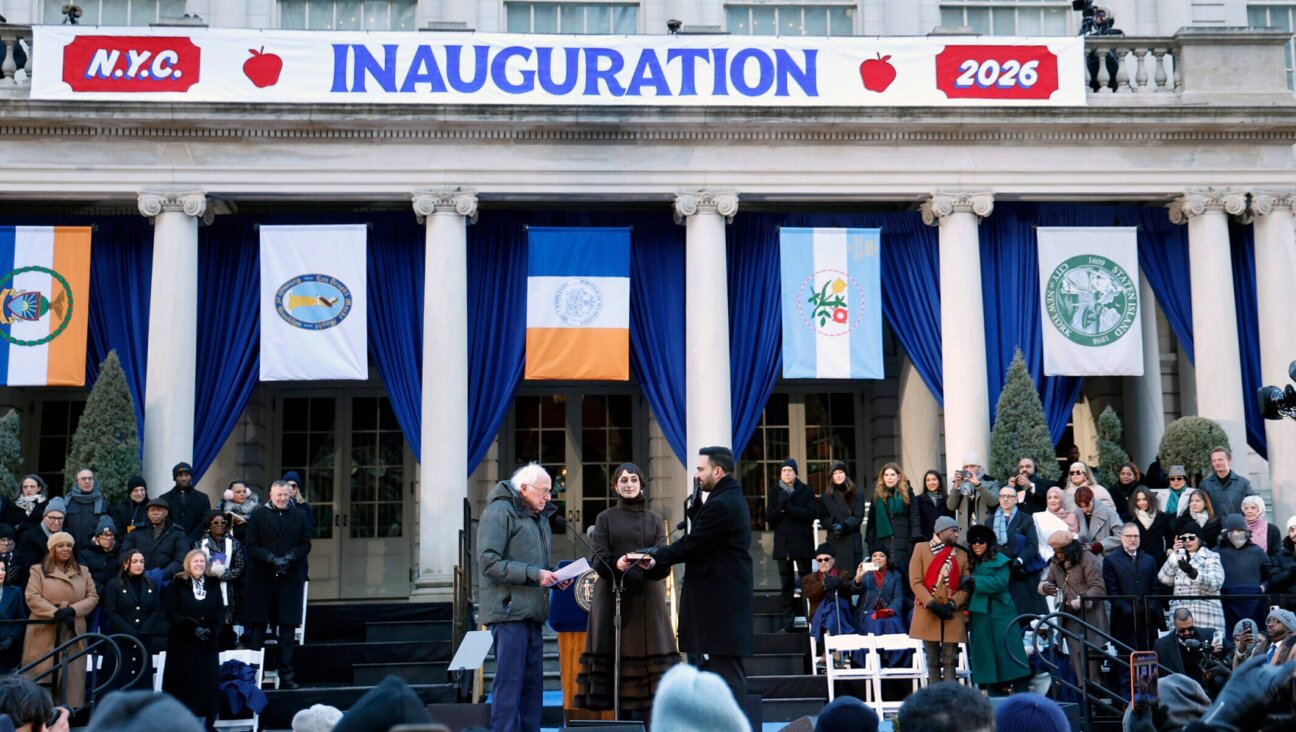‘Jews Who Rock’ Only Scratches Surface of Fame and Faith

Graphic by Angelie Zaslavsky
In the gallery of Jewish Museum Milwaukee, sunlight streams in through windows that display colorful floor-to-ceiling banners from a concert shot taken at Milwaukee Summerfest in 1995. Nearby is a display of a redwood and abalone inlay bass guitar loaned to the museum by members of Howie Epstein’s family. Howie, bassist for Tom Petty and the Heartbreakers, also played on recordings by Bob Dylan, Stevie Nicks, the Village People, Warren Zevon and others, and was born in Milwaukee and attended local Nicolet High School.
Throughout the exhibit “Jews Who Rock: A Musical History Tour,” currently on view at the museum, are artifacts and photos from a variety of Jewish artists — some surprising (Geddy Lee of Rush, Warren Zevon), some not so surprising (Barry Manilow, Barbra Streisand, Neil Diamond, Paul Simon).
Visitors learn much about the Jewish backgrounds of various rockers. What we don’t learn, however, is how Judaism influenced their music, either as something to inspire or react against. For instance, a plaque informs us that Bob Dylan was born Robert Allen Zimmerman, but we don’t learn about how writers have argued that Dylan rejected his Judaism and became an uber-assimilationist, as David E. Kaufman wrote in “Jewhooing the Sixties.” Others have argued the very opposite — Seth Rogovoy posits that Dylan’s lyrics were actually inspired by his Jewish heritage in “Bob Dylan: Prophet, Mystic, Poet.”
Several of the featured musicians, such as Hillel Slovak of the Red Hot Chili Peppers and Gene Simmons (born Chaim Wirtz) of Kiss, were the children of Holocaust survivors, but the exhibit provides no analysis of whether being the children of survivors had a direct influence on their music. I wondered whether Simmons’s experiences as a child of a concentration camp survivor had anything to do with the makeup and costumes he wore as a KISS member, whether it inspired a deep desire to disguise his identity, or the desire to create a new identity for himself — an aggressive in-your-face one.
On the flip side, the exhibit shows that some of the younger generation of rockers, featured on one wall of the gallery, have done the exact opposite of their Jewish predecessors who purposefully shed their Jewishness in name and dress. Curator Molly Dubin worked with Victoria Rehberg, executive director of National Exhibitions & Archives, to customize a version of the original 2006 exhibit. Dubin included some material of local interest in addition to featuring younger, more contemporary Jewish rockers such as Drake, Pink, Matisyahu, Adam Levine and Ezra Koenig. The plaque accompanying Matisyahu’s photo explains that he was born Matthew Paul Miller in 1970, and that Matisyahu — the name he adopted when he became hasidic — is the Hebrew equivalent of “Matthew.”
A photo shows him with his trademark beard and tzitzit showing (in recent years Matisyahu has shed his hasidic identity).
Lisa Loeb, the plaque says, has “an unabashedly Jewish name [demonstrating] that there’s no need for pseudonyms in this day and age.”
Curiously, left unremarked upon is the fact that in the photo of Lenny Kravitz photo, he is actually wearing a large gold cross around his neck. Adam Levine of Maroon 5 clearly has a Jewish name, but he unabashedly shows off an arm full of tattoos in his photo; the “unkosherness” of the tattoos is not mentioned.
As it stands, the exhibit is an entertaining and informative exercise in “Jewspotting” that leaves open the question of whether there are deeper, hidden connections between these rockers and their Judaism.
“Jews Who Rock: A Musical History Tour” is currently on display at the Jewish Museum of Milwaukee through August 10.
Laura Hodes is a writer and attorney based in Chicago.
